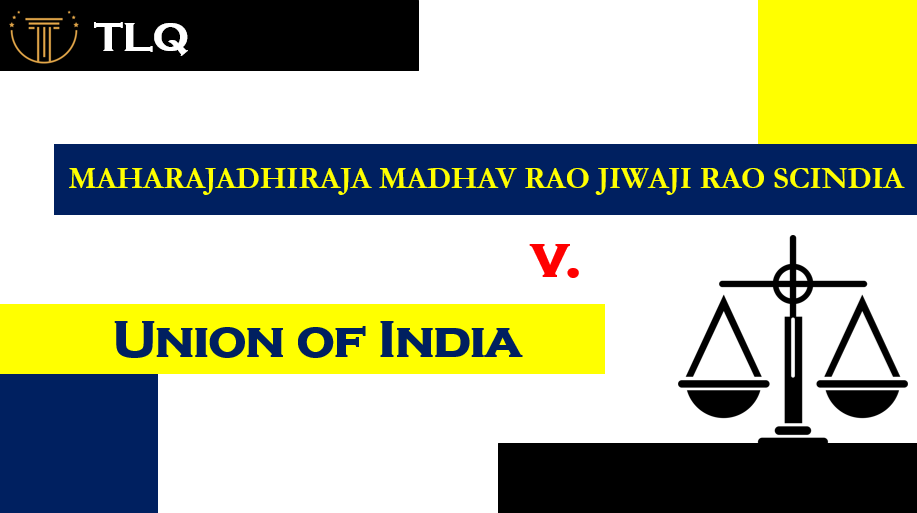Published On: 27th May 2025
Authored By:- Dr Teena Momsia
Dr Bhimrao Ambedkar Law University, Jaipur
1. INTRODUCTION
Trademarks are among the most valuable assets for any business, serving as a safeguard for its identity and reputation within the market. They help ensure consumer trust and prevent brand dilution, which can otherwise lead to financial losses and weakened loyalty. Particularly, well-known trademarks represent reliability and quality and are given special protection under Section 11(10)[1] of the Trade Marks Act, 1999. Preserving these marks is essential for maintaining consumer confidence, as they guarantee that products or services meet expected standards. For global businesses, protecting trademarks is vital for sustaining their market presence and reputation across international boundaries. Courts have increasingly enforced measures to protect famous trademarks, such as those of Rolex[2] and Lacoste[3], underlining the importance of intellectual property rights.
Amul is a standout example of a brand with remarkable global recognition. Originating as a cooperative initiative, the name “Amul” is derived from Anand Milk Union Limited, the earlier designation of its proprietor, the Kaira District Cooperative Milk Producers Union Limited. Known as “The Taste of India4,” Amul has long been committed to protecting its trademark against infringement and misuse. Its extensive history and widespread reputation have solidified the trademark “Amul” as a symbol of quality and excellence. This discussion will examine a landmark case involving the protection of Amul’s trademark and its implications for intellectual property law in India.
2. BACKGROUND
Amul, a globally renowned Indian brand, has actively safeguarded its trademark against unauthorized use and infringement as the registered proprietor of the “Amul” trademark. Widely recognized as “The Taste of India,” Amul has consistently prioritized protecting its intellectual property. The name “Amul” originates from the earlier designation of its proprietor, the Kaira District Cooperative Milk Producers Union Limited, which reflects its roots in the cooperative movement. According to Section 2(1)(zb)[4] of the Trade Marks Act, 1999, a trademark is defined as a symbol, design, or name that can be graphically represented and is capable of distinguishing one entity’s goods or services from another’s. This includes aspects like shapes, packaging, and combinations of colors. One significant case that exemplifies the complexities of trademark protection is the 2024 Delhi High Court ruling in favor of Amul. The dispute involved Veldon Chemical and Food Products, which was accused of infringing Amul’s trademark by using the brand name “Amul” for non-alcoholic beverages. This landmark judgment underscored the critical importance of intellectual property protection and the special safeguards afforded to well-known trademarks under Indian law. It tackled key issues such as trademark infringement and the likelihood of consumer confusion, offering valuable insights into the framework for preserving iconic brands’ integrity. This analysis will further explore the case’s pivotal aspects and its broader implications for trademark laws in India.
3. FACTS OF THE CASE
Amul, a renowned Indian brand owned by Gujarat Co-Operative Milk Marketing Federation Ltd., has long been associated with milk, milk-based products, and other food and beverages under its registered trademark “AMUL.” In this case, the plaintiff, as the registered proprietor of the trademark, filed a lawsuit against Terre Primitive, an Italian company that sells, markets, and promotes cookies and chocolate-covered biscuits under the brand name “AMULETI.” The plaintiff argued that “AMULETI” bore structural and visual similarities to the “AMUL” trademark, which could mislead consumers and cause confusion. The plaintiff emphasized that the “AMUL” trademark had been in use since 1958, while the defendant began using “AMULETI” in 2020. They asserted that adding the suffix “ETI” to “AMUL” constituted blatant copying, designed to deceive the public into believing the defendant’s goods were connected to or originated from the plaintiff.
Additionally, the plaintiff discovered another instance of trademark misuse in February 2020, when candles under the name “AMUL” were being offered as complimentary gifts with cake purchases at a prominent cake shop in Kolkata. Upon investigation, the plaintiff located and obtained larger packs of candles bearing the “AMUL” mark. It became apparent that the defendant had fraudulently adopted a writing style similar to the “AMUL” trademark to gain undue profits by leveraging the brand’s reputation. Subsequently, the plaintiff filed a suit seeking a perpetual injunction against the defendant for trademark infringement and passing off.
During the court proceedings, the defendant failed to present a written statement or appear despite notices published in newspapers. As a result, the plaintiff’s counsel invoked Order 8 Rule 10 of the Civil Procedure Code (CPC)[5], which allows the court to deliver judgment based on the evidence submitted if the defendant does not respond adequately. The court, satisfied with the plaintiff’s documentation, concluded that the defendant had infringed the “AMUL” trademark under Section 29 of the Trade Marks Act, 1999[6]. Applying the deceptive similarity test as established in Cadila Health Care Ltd vs Cadila Pharmaceuticals Ltd[7][8], the court ruled that the defendant’s actions would likely harm the plaintiff’s revenue and goodwill. It decreed the case in favor of the plaintiff, reaffirming the importance of protecting well-known trademarks.
The court further differentiated between “passing off” and “infringement,” noting that passing off is a common law remedy requiring proof of consumer confusion and deception, whereas infringement is a statutory remedy based on exact or deceptively similar use of a certified trademark. This case underscores the necessity for swift judicial action in commercial disputes to prevent undue harm to trademark owners and their reputation.
4. CRITICAL LEGAL ISSUES OF PRESENT CASE
To safeguard the renowned brand’s reputation, goodwill, and intellectual property rights, a clear and robust legal framework is essential for addressing the following critical issues:
- Does the defendant’s use of the “AMUL” mark constitute trademark infringement?
- Is the “AMUL” mark entitled to well-known trademark status, warranting broader protection across industries?
- What are the implications of trademark infringement for renowned brands, and how can damages be adequately assessed?
- How can the legal framework be strengthened to prevent trademark infringement and protect intellectual property rights of renowned brands?
5. CASE ARGUMENTS IN BRIEF
A. Submissions on behalf of Petitioner –
- Trademark Ownership: Petitioner No. 1 owns the trademark “AMUL,” an acronym for Anand Milk Union Limited.
- Historical Significance: “AMUL” is a well-known trademark with historical significance, tracing back to India’s White Revolution and Operation Flood.
- License Agreement: Petitioner No. 1 and Petitioner No. 2 (Gujarat Cooperative Milk Marketing Federation Limited) entered into a license agreement in 2001, allowing Petitioner No. 2 to use and manage the “AMUL” trademark.
- Trademark Registrations: “AMUL” is registered in various classes, including Class 5 (1966) and Class 32 (2005)[9].
- Well-Known Trademark: “AMUL” was declared a well-known trademark by the Intellectual Property Appellate Board (IPAB) in 2011.
- Infringement and Passing Off: Petitioners claim protection from infringement and passing off, citing various court decisions.
- Turnover and Marketing Expenses: Petitioners provided evidence of significant turnover and marketing expenses associated with the “AMUL” trademark.
- Grievance against Respondent: Petitioners contest the respondent’s registration of the “AMUL” mark for non-dairy products, claiming dishonesty and non-use.
- Rectification and Removal: Petitioners seek rectification and removal of the impugned mark under Section 47 of the Trade Marks Act, 1999 (Section 47).
B. Submissions on behalf of Petitioner –
- Dissimilarity in Marks: The respondent’s mark “AMUL” is structurally and visually different from the petitioner’s device mark registered in Class 32.
- Different Category of Goods: The respondent’s goods (mineral and aerated water) are different from the petitioner’s main products (milk and milk products).
- Prior Use: The respondent claimed use of the mark since 1957, preceding the petitioner’s proposed use claim in 1988.
- Petitioner’s Non-Use: The respondent argued that the petitioner had not shown any product in the market related to Class 32, making their mark invalid under Section 47[10].
- Petitioner’s Later Applications: The respondent highlighted the petitioner’s later applications for formative marks under Class 32 in 2017, which were on a “proposed to be used” basis.
- Well-Known Mark Declaration: The respondent argued that the petitioner’s well-known mark declaration in 2011 did not affect their already registered mark.
- No Objection Raised: The respondent relied on Section 11(5)[11], stating that the petitioner did not raise any objection during the registration process.
- Distinct Marks: The respondent cited the Supreme Court decision in Nandini Deluxe v. Karnataka Cooperative Milk Producers Federation Limited [12](2018) to assert that their mark is distinct from the petitioner’s mark.
6. ANALYSIS AND FINDINGS
The court analyzed the contentions and arguments of both parties and found that the respondent had failed to provide any evidence to support their claim of use since 1957. The court noted that the respondent’s mark is identical to the petitioners’ registered mark and that there is a likelihood of confusion among consumers.
The Court also found that the petitioners’ mark has gained significant reputation and goodwill over the years and that it is a well-known mark in India. The court noted that the respondent’s mark is likely to cause dilution of the petitioners’ mark and that it is not entitled to protection.
The Court relied on various judicial precedents to hold that the respondent’s mark should be removed from the register under Section 47.
7. RELEVANT RULINGS
1. Petitioner’s Side
1. Gujarat Cooperative Milk Marketing Federation Limited & Ors. v. Maruti Metals[13] –
This case granted protection to the petitioner’s registered marks from infringement/passing off.
2. Kaira District Cooperative Milk Producers Union Ltd. v. Bharat Confectionery Works[14] –
This case held that ‘AMUL’ has become a household word.
3. Fybros Electric Pvt. Ltd. v. Mukesh Singh & Anr,[15] –
This case held that “inaction in opposing the application filed by the applicant for registration of the impugned mark cannot divest the petitioner of its right to seek rectification of the Register and removal of the impugned mark.”
4. Kaira District Cooperative Milk Producers Union Ltd & Anr. V. Maa Tara Trading Co. And Ors, –
This case held that the defendant’s mark was injuncted, where the defendant was using the ‘AMUL’ mark for candles being sold at cake shops and confectioneries.
2. Respondent’s Side
- Nandini Deluxe v. Karnataka Cooperative Milk Producers Federation Limited[16]– This case held that “there was a contrast between the device mark and word mark of the respondent and the marks were altogether different.” (Paragraph 26.7) and “if a manufacturer has no bona fide intention to trade in goods and articles falling under the same classification, it should not be allowed to enjoy the monopoly in respect of all the articles in the said classification.” (Paragraph 32).
8. CONCLUSION
The Delhi High Court’s order in the AMUL case marks a significant milestone in protecting Indian trademarks from foreign infringement. This ruling underscores the importance of safeguarding well-known trademarks, particularly in a globalized economy where the risk of infringement is heightened. The court’s decision demonstrates the robust framework provided by Indian trademark laws, which offers comprehensive protection to distinctive brands. However, it is also crucial to acknowledge that the court’s application of Section 29 of the Trademarks Act, 199917, could have been more rigorous, particularly with regard to sub-clause (c)[17]. A more nuanced approach would ensure that trademark infringement cases are evaluated comprehensively, balancing the need to protect brand legacy and uniqueness with the need to promote fair competition. As the digital marketplace continues to evolve, courts must remain vigilant in navigating these complexities to ensure that trademark laws remain effective and equitable.
Reference(s):
[1] Section 11(10) of the Trade Marks Act, 1999 ; While considering an application for registration of a trade mark and opposition filed in respect thereof, the Registrar shall–
(i) protect a well-known trade mark against the identical or similar trade marks;
(ii) take into consideration the bad faith involved either of the applicant or the opponent affecting the right relating to the trade mark.
[2] Rolex Watch U.S.A., Inc. v. Rainbow Jewelry, Inc.; Case No. 12-21437.
[3] Lacoste & Anr. v. Crocodile International Pte Ltd & Anr. ; [2024: DHC: 6150]. 4 Amul. https://amul.com/.
[4] Section 2(1)(zb) ; Similarly, the definition of the term “trade mark” is defined under Section 2(1)(zb) of the Act. It can be stated as follows:
- The trade mark must be a mark. That is, nothing else than a mark as defined in Section 2 (1)(m) of the Act is capable of being designated as a trade mark if additional conditions are met.
- That such a mark is capable of being represented graphically. That is to say, if a mark cannot be represented visually, it cannot be accorded trade mark registration.
- Such a mark must be capable of identifying one person’s goods or services from those of others. It implies that the mark must have certain distinguishing qualities, either phonetically, structurally, or aesthetically, to allow consumers to associate a product bearing that mark with a certain proprietor or authorised user without much misunderstanding. Such differentiation can be innate, as in coined and created terms, or learned.
[5] Order 8, Rule 10 of the Code of Civil Procedure (CPC) ; dictates that if a party fails to present a written statement within the time permitted by the court, the court may pronounce judgment against them or make such other order as it deems fit.
[6] Section 29 of the Trade Marks Act, 1999 ; defines trademark infringement, stating that a registered trademark is infringed when someone, other than the registered proprietor or a permitted user, uses a mark in the course of trade that is identical or deceptively similar to the registered mark, likely to cause confusion or association.
[7] Cadila Healthcare Limited vs Cadila Pharmaceuticals Limited (2001) ; Supreme Court 1952, 2001 (5) SCC
[8] Cadila Healthcare Limited vs Cadila Pharmaceuticals Limited (2001) ; Supreme Court 1952, 2001 (5) SCC
[9] Trademark Class 32, under the 200; Nice Classification, covers non-alcoholic beverages, including beer, mineral and aerated waters, fruit drinks and juices, and syrups and other preparations for making beverages.
[10] Section 47 of the Trade Marks Act, 1999; allows for the removal of a registered trademark from the register due to non-use, if the trademark was registered without a bona fide intention to use it or if there has been no bona fide use for a continuous period of five years and three months from the date of registration.
[11] Section 11(5) of the Trade Marks Act, 1999 ; states that a trademark cannot be refused registration on the grounds specified in sub-sections (2) and (3) unless the proprietor of the earlier trademark raises an objection to one or more of those grounds in opposition proceedings.
[12] M/S. Nandhini Deluxe vs M/S. Karnataka Cooperative Milk (2018); Civil Appeal Nos. 2937-2942 of 2018.
[13] Gujarat Cooperative Milk Marketing Federation Limited & Ors. v. Maruti Metals ; CS (COMM) 343/2021.
[14] Kaira District Cooperative Milk Producers Union Ltd. v. Bharat Confectionery Works; 1993 SCC OnLine Del 227.
[15] Fybros Electric Pvt. Ltd. v. Mukesh Singh & Anr ; SCC Online Del 2948, (2023:DHC:3484).
[16] Nandini Deluxe v. Karnataka Cooperative Milk Producers Federation Limited; (2018) 9 SCC 183. 17 Section 29 of the Trademarks Act, 1999 ; A registered trademark is infringed when someone, who is not the registered proprietor or a permitted user, uses a mark in the course of trade that is identical or deceptively similar to the registered trademark, in relation to the same or similar goods or services.
[17] Sub-clause (c) of Section 29 states:
“(c) the use of the mark is such as to take unfair advantage of or is detrimental to the distinctive character or repute of the registered trade mark.”


